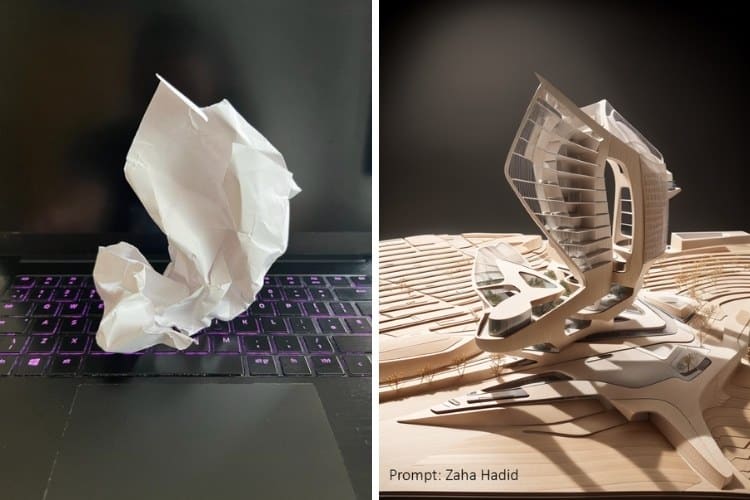Community, Leadership, Experimentation, Diversity, & Education
Pittsburgh Arts, Regional Theatre, New Work, Producing, Copyright, Labor Unions,
New Products, Coping Skills, J-O-Bs...
Theatre industry news, University & School of Drama Announcements, plus occasional course support for
Carnegie Mellon School of Drama Faculty, Staff, Students, and Alumni.
CMU School of Drama
Thursday, November 16, 2023
Fantastical AI Architecture Based on Pieces of Crumpled Paper
mymodernmet.com: Architectural designer Tim Fu, formerly of Zaha Hadid Architects, is embracing AI technology and showing how the tool can be integrated into architectural practices. A recent exercise using a crumpled piece of paper and LookX, an AI platform for designers and architects, is particularly interesting.
Subscribe to:
Post Comments (Atom)

4 comments:
I have never heard of LookX before, and I have not ever really thought about AI use in architecture specifically. This was really interesting for me to read, especially now as I’m researching an architect for my Guess Who project. I also did not know that Frank Ghery had a creative process where he crumpled up pieces of paper. That seems like a really interesting way to come up with new shapes and forms. I really enjoyed looking at the images that the AI was able to come up with. They are clearly quite accurate, and thus are really fun to look at. This seems like it could be a helpful tool to architects, but I also feels like it kind of takes away from the creative process. It does not really feel like you are doing all the work you should be doing as a designer. However, if used in the proper way, it can just serve as loose inspiration.
I have always loved architecture, especially architecture that puts builings at weird angles and thin supports, making it seem as if it were floating. There is a building on the river in downtown Chicago, I can't remember the name right now, but it juts out at almost a 45 degree angle with a very small base. I have always loved that building even though I always feel just a little bit of fear when I look at it wondering how that thing is still standing up. Using paper in such a way to create new ideas for how a building might look is a very cool idea, and AI is useful in this instance by offering up more details on how that shape might really look. It makes we wonder how accurately that software can be compared to a real building structure and if it starts to make the architects job faster/easier if the don't have to visual things themselves and can use something else to paint the picture for them.
This is exactly my fear with the introduction to AI. I am in the AI and Arts themed Interpretation and Argument and interestingly this is exactly what I am writing my final research paper about. About the dangers of having AI capabilities to reproduce famous designer’s, architects, artists, without their permission, possibly because some of them are dead. Also in order for AI to have generated anything that remotely resembled a building by one of the famous architects mentioned in the article that means that the AI was trained on images of actual buildings designed by that architect and that is copyrighted material. AI’s datasets are so convoluted with copyrighted material and the likelihood of asking it a question and not getting an answer that has some copyrighted material in it is slim. However, these artists don’t get compensated for the use of their work and so bad architects are using AI to make building in the style of successful architects and cheat the system.
I tend to avoid articles on AI because it is such a big upcoming technology that I don’t know much about. I feel like if I tried to catch up on how AI works and the technologies out there, by the time I would be caught up, I would already be behind on the next thing because these technologies are so new. However, this article seemed like a good introduction to the AI world. I really enjoyed seeing how the technology transformed the paper into such a cool building. However, I do think this alone, without AI would be such a fun exercise. I could definitely see myself doing this by myself as an exercise in creativity. I thought it was so cool how it could take the same photo and translate it into different designs based on the aesthetic of a famous architect. I can see all of these designs being actual renderings of buildings being built currently in the world.
Post a Comment